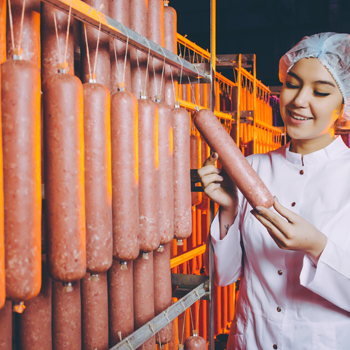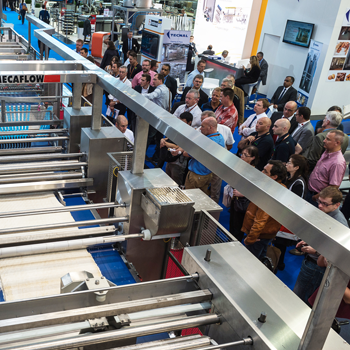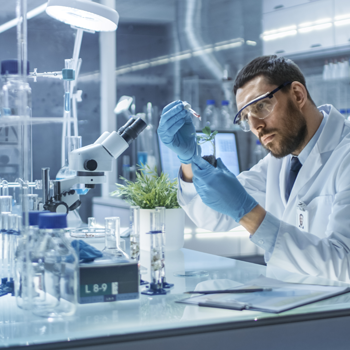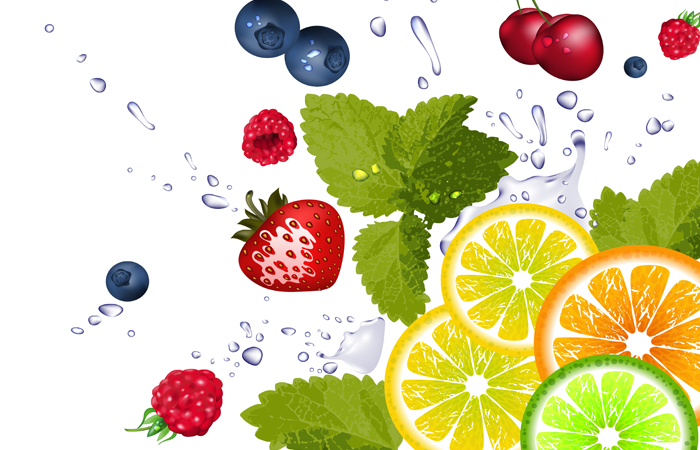โปรตีนไฮโดรไลเซท: ส่วนผสมทางเลือกเพื่อปรับปรุงคุณภาพผลิตภัณฑ์ไส้กรอก
By: Kanokrat Limpisophon, Ph.D.
fagikrl@ku.ac.th
Phaeploy Pitakpirompai
Department of Food Science and Technology
Faculty of Agro-Industry, Kasetsart University
ไส้กรอกเป็นผลิตภัณฑ์แปรรูปเนื้อสัตว์ โดยการนำเนื้อสัตว์มานวดบดผสมกับเกลือ ไขมัน และเครื่องปรุงอื่นๆ บรรจุในไส้ของสัตว์หรือไส้เทียม เช่น ไส้คอลลาเจน ไส้พลาสติก ผลิตภัณฑ์ไส้กรอก หมายรวมถึง ผลิตภัณฑ์เนื้อสัตว์ต่างๆ ที่ผ่านกระบวนการแปรรูปในลักษณะดังกล่าวข้างต้น เช่น ไส้กรอกปลา กุนเชียง ทั้งนี้ องค์ประกอบหลักของผลิตภัณฑ์ไส้กรอก คือ โปรตีน และไขมัน ผลิตภัณฑ์ไส้กรอกเป็นอาหารที่สะดวกซื้อ อีกทั้งมีรสชาติที่หลากหลายอร่อยถูกใจผู้บริโภค แต่โดยทั่วไปมักพบปัญหาที่มีอายุการเก็บรักษาที่ไม่ยาวนาน เนื่องจากการเสื่อมเสียจากเชื้อจุลินทรีย์ และในด้านคุณภาพจากการเกิดกลิ่นหืนของส่วนประกอบที่เป็นไขมัน นอกจากนี้ยังอาจเกิดการเปลี่ยนแปลงด้านเนื้อสัมผัสและสีของผลิตภัณฑ์ได้ ดังนั้น จึงมีงานวิจัยหาแนวทางการใช้ประโยชน์โปรตีนไฮโดรไลเซท เพื่อการปรับปรุงคุณภาพผลิตภัณฑ์ไส้กรอก
โปรตีนไฮโดรไลเซท คือ ผลิตภัณฑ์โปรตีนที่ถูกย่อยด้วยเอนไซม์โปรตีเอส ได้เป็นสารเปปไทด์ที่มีขนาดเล็กลงและกรดอะมิโนอิสระ สามารถใช้แหล่งโปรตีนทั้งจากพืชหรือโปรตีนจากสัตว์ เพื่อย่อยด้วยกระบวนการไฮโดรไลซิสและเอนไซม์ที่เหมาะสมให้กลายไปเป็นโปรตีนไฮโดรไลเซทประเภทต่างๆ ได้หลากหลายชนิด นอกจากนี้ โปรตีนไฮโดรไลเซทยังเป็นส่วนผสมอาหารเชิงหน้าที่ในระดับอุตสาหกรรม เช่น ในผลิตภัณฑ์ไส้กรอก เครื่องดื่มเสริมโปรตีน สำหรับการใช้โปรตีนไฮโดรไลเซทในผลิตภัณฑ์ไส้กรอกจะมีผลช่วยในการปรับปรุงคุณภาพ และคุณลักษณะด้านต่างๆ ของผลิตภัณฑ์ไส้กรอก ดังนี้
- เพิ่มความคงตัวด้านเนื้อสัมผัสของผลิตภัณฑ์ไส้กรอก
- ชะลอการหืนและรักษาปริมาณกรดไขมันไม่อิ่มตัวที่มีประโยชน์ในผลิตภัณฑ์
- เพิ่มกลิ่นรสและปรับปรุงเนื้อสัมผัส
- ช่วยลดการเปลี่ยนแปลงของสีของไส้กรอก
อย่างไรก็ตาม การเติมโปรตีนไฮโดรไลเซทควรมีการปรับสูตรศึกษาหาปริมาณการใช้ที่เหมาะสมโดยเฉพาะในเรื่องรสชาติ เนื่องจากโปรตีนไฮโดรไลเซทบางประเภทจะให้รสขมกับผลิตภัณฑ์ได้
Sausage is one kind of comminuted meat products made by grinding meat, mixing with salt, fat, other seasoning ingredients and followed by stuffing into either a natural casing from animal intestines or synthetic casing such as collagen or plastic. Sausage can be made from various meats for example fish sausage, Chinese sausage, in which protein and lipid are the main components. Sausage is a convenience food and can have variety of tastes for various consumers. Generally, sausage has a short shelf-life due to microbial spoilage and off-flavor quality due to a rancidity of lipid components. Furthermore, there may be changes in texture and color of the products. Therefore, some researches have reported the use of protein hydrolysate to improve the quality of sausage products.
Protein hydrolysate is a product of protein hydrolyzed by the enzyme called protease which splitting protein into smaller peptides and free amino acids. Protein from both plant sources and animal sources can be used as a protein source to produce the protein hydrolysate. The protein hydrolysate can be used as a functional food ingredient in food industrial products. Since the protein hydrolysate provides a greater solubility than native proteins, contributes to a specific flavor, has an antioxidant activity, and improves food stability, the use of protein hydrolysate in sausage products then help to improve the quality and characteristics as follows;
- Stabilizing the texture of sausage products
- Slow down rancidity and maintain health benefit unsaturated fatty acids in products
- Enhancing flavor and improving texture
- Reducing color changes of the sausage
The addition of protein hydrolysate should be adjusted to the appropriate sausage recipe to suit the specific requirement, especially in flavor because some protein hydrolysates can give a bitter taste to the product.









